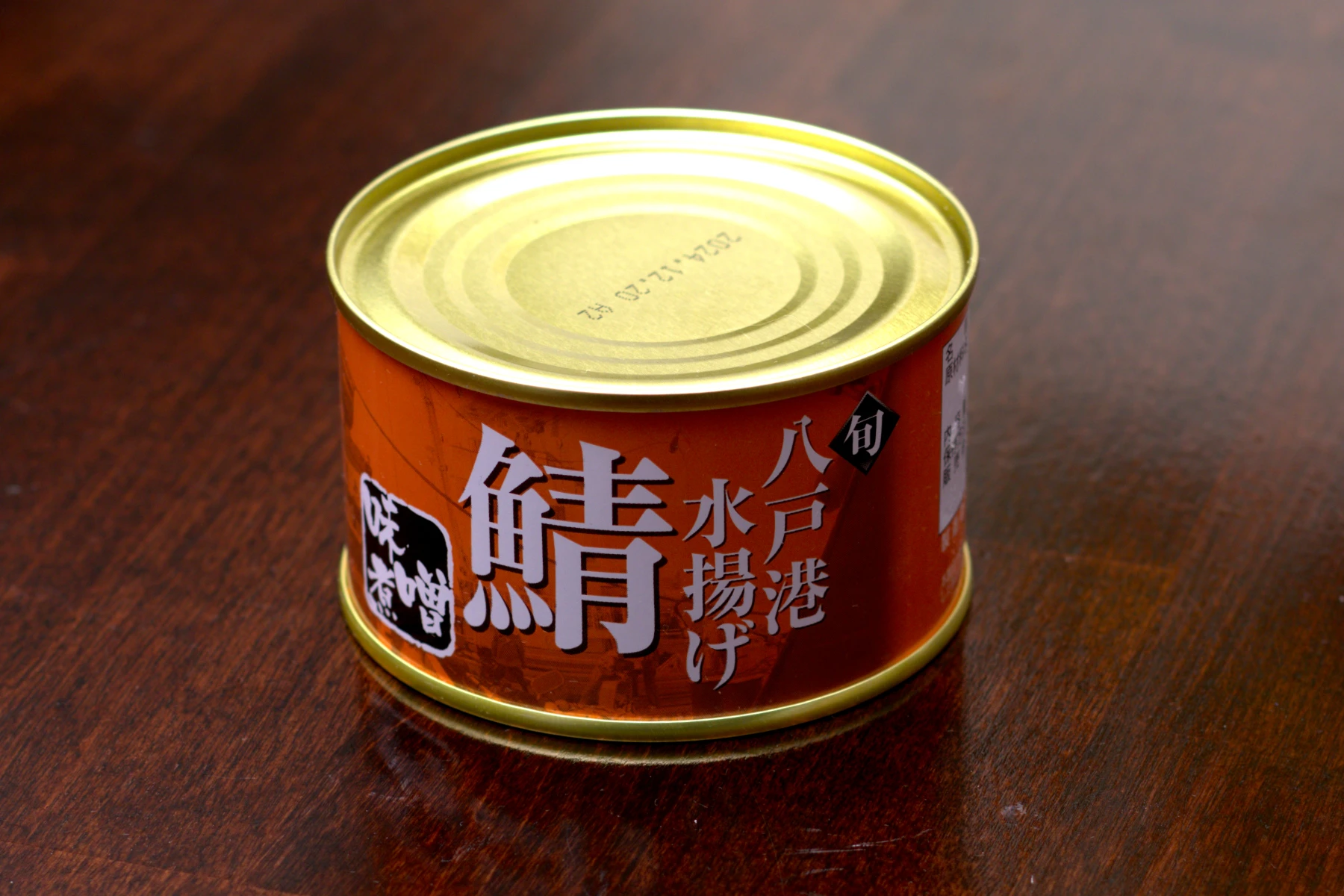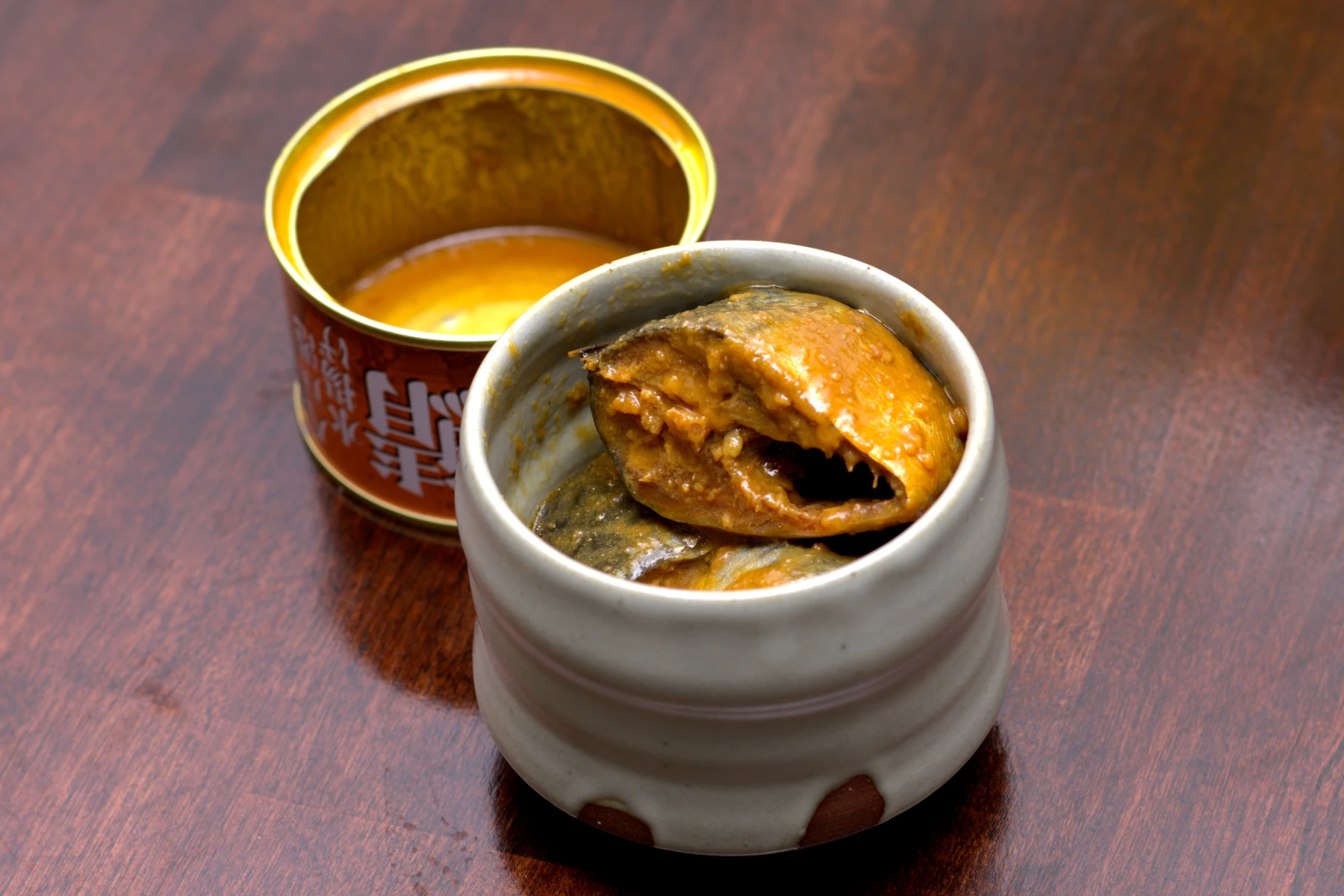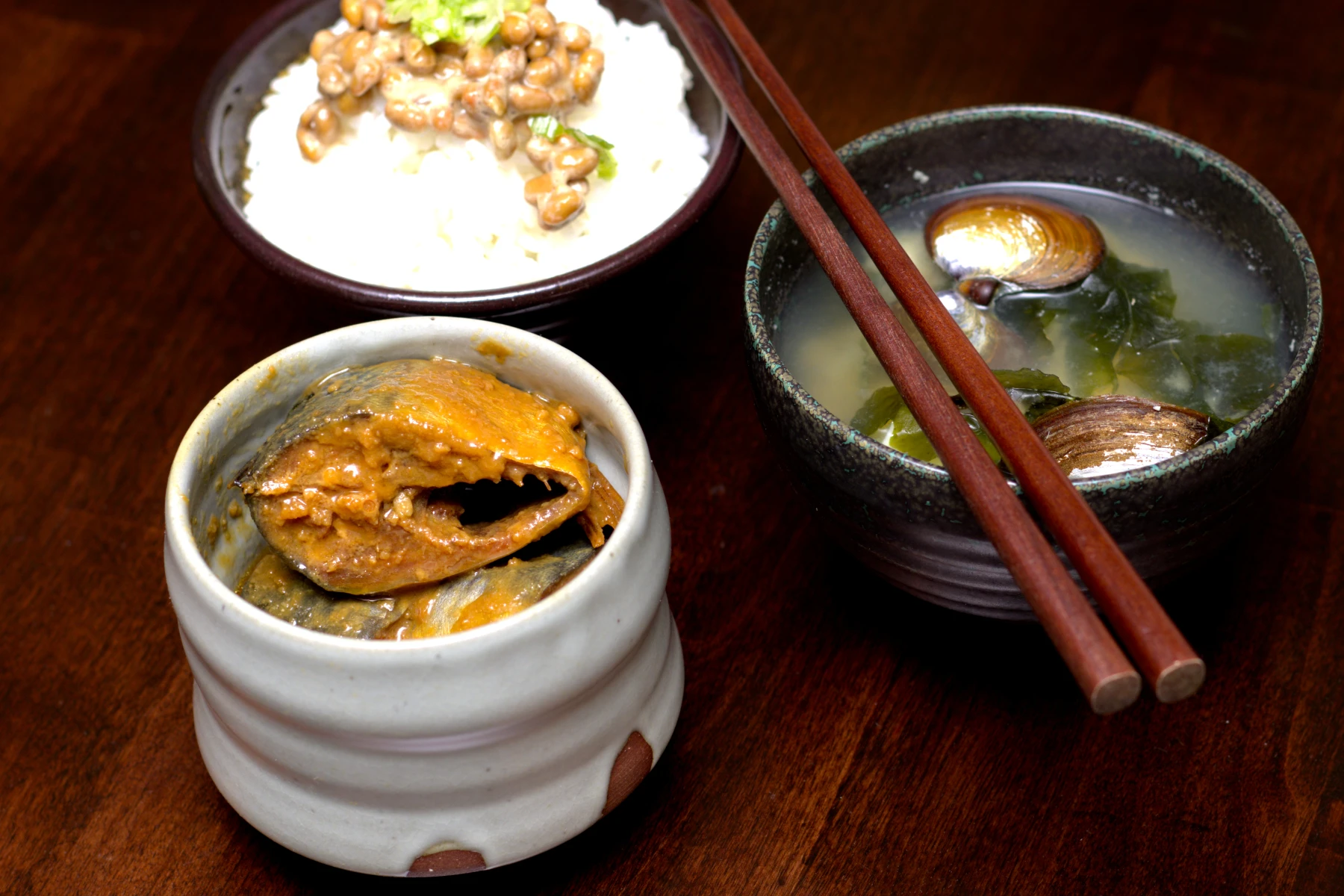Hachinohe Saba (Mackerel) in Miso
So Much Soy
Originally Published: Thursday, August 10, 2023
Specs
 Hachinohe? Hachi-no-WAY!
Hachinohe? Hachi-no-WAY!No Miso Puns Allowed
Before I started writing this review, I promised myself I wouldn’t make any miso related puns, as they’re overdone and you’re likely familiar with all of them.
I see today’s entry as a bit of a redemption arc for Japanese canned seafood after the less than glowing review I gave to the first Japanese product on the blog. I didn’t want to give people the impression that Japan had a lack of good canned seafood. The product today is a mackerel or saba from Hachinohe cooked in brine and seasoned with miso sauce.
Hachinohe is not so much a brand name as an origin denomination. The port of Hachinohe is situated on the east coast of the Aomori prefecture on Japan’s main island of Honshu. Hachinohe is famous for their mackerel culture, so much so that people travel from all over just to try their local mackerel cuisine. This canned good is a direct-sale product from their agricultural society, which accounts for the lack of distinct branding. Being a direct-sale product it was also a lot more difficult finding more information on the item and my Google-fu failed to find much on the manufacturing process or where it was produced.
What I do know is that these mackerel were fished from the waters local to Hachinohe (mizuage, or 水揚げ, literally lifted out of the waters. If you want to go down a weird rabbit hole look up the term mizuage as it relates to geisha.) The product also states that the fish was cooked in brine before being smothered in a miso sauce and canned.
Soy Story
Miso is likely a familiar ingredient to most, but if you’ve never had it before I will describe it to you. Just know that it tastes way better than it sounds. Miso is basically a paste made from fermented soy beans, salt, and other regional flavourings. Soy is the main ingredient but other grains are often incorporated as part of the fermentation process, most commonly barley, buckwheat, or rice husks.
There are countless varieties of miso with different colours, textures, ingredients, and flavour profiles, but they all add a level of earthy depth and umami to whatever you’re cooking.
Besides miso, fermenting soybeans also gets us soy sauce - possibly the most important condiment in Asian cooking. Curdled soy milk is used to make tofu and bean curds, and whole soybeans can be consumed directly.
The Japanese also ferment soybeans to create the national treasure natto, a stringy, smelly, sticky soybean product that’s often used as a topping on rice or even rolled up in sushi. People either love natto or think it’s born from the bowels of Satan himself.
Did I include all of these items in my tasting today, like some kind of crazy person who writes about preserved fish on the internet?
Well… yes.
 That is a saucy mackerel.
That is a saucy mackerel.Saba-dy to Love
The can featured an easy open pull-ring which peeled the lid off with ease. The smell of sweet miso and briny mackerel was immediately noticeable. I poured the contents into a separate dish since the sauce was filled to the brim and made the product hard to see. As the contents exited the can the smell of miso became more potent and appetizing.
A drop of sauce landed on the countertop while prepping so I took a quick sample taste. My initial impressions were thankfully, positive. The sauce was sweet and warm, with a good punch of umami. The texture was smooth and creamy. Anyone familiar with miso soup would recognize that the particles of miso paste tend to sink to the bottom of the bowl if sat undisturbed, this sauce did not show any such separation.
The fish were cut into darnes, which is essentially a fish steak with the bone still in. These pieces were meaty and generous. The meat was tender and had a solid structure and were easily separated into smaller morsels using chopsticks.
My initial impressions upon first taste were that they were a bit sweet. The sweet miso sauce, while offering plenty of savouriness and creamy, earthy flavours, were still a bit on the sweet side. However, due to the chunky nature of the fish steaks, there were sections of the fish that were untouched by the sauce which allowed me to taste the fish on its own.
 As promised, more soy. Natto on rice, miso soup with tofu and clams.
As promised, more soy. Natto on rice, miso soup with tofu and clams.As expected, the mackerel had a nice fishiness to them that some might find a bit off-putting, although the fishiness is quite a bit more subdued than some other mackerel products I’ve tried in the past. A nice saltiness permeates the fish steak and allows for a palate reset.
The rounds of fish had the skin and bones intact, which provided some different textures. Those who don’t like the bones could remove them with ease as they detached quickly with a bit of manipulation from chopsticks.
Overall the flavours were actually quite subtle, even with the miso. The secret with this product was to take generous bites of the fish with each dollop of sauce, as the sweetness of the sauce was formulated to balance the fishiness and saltiness of the fish.
Enjoy this product with a few other soy-centric items, such as natto on rice, miso soup with soft tofu, and edamame.
A Good Meal
It’s incredible to think about the different preservation techniques that went into the production of this product. Fermentation, one of the oldest forms of food preservation joins forces with canning, one of the newer forms, to create an affordable and flavourful product that is a joy to eat.
At about $5 per 200 gram can, this product is not only a great value, but also very tasty. The quality of ingredients is good and it’s an impactful enough product to stand alone on the dinner table, but versatile enough to be a side dish in a bento box. The sauce may catch you off guard a bit at first, but the flavours quickly soften and grow on you. It’s a hefty amount of product for not a lot of money, which puts this in the good value camp.
If there is one downside to this product, it’s that the saucy is a bit drippy and messy, and there is a danger of sauce droplets attacking you when opening the can, so wear an apron when dealing with this product.
If you find this product in stores and are looking for something a little different from the European style of mackerel preparation, give this a try.